
Pigeon Diet & Proper Feeding
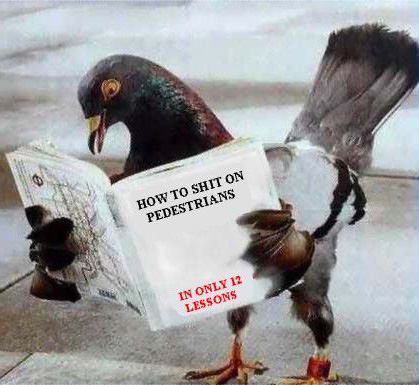 Pigeons
require a very specific diet in order to maintain their health. Proper
feeding and nutrition is very import for pigeons to provide warmth, energy,
and reproductive functions.
Although feeding pigeons may seem like a relatively simple proposition, choosing
the best pigeon feed does require a bit of understanding as it relates
to
how the pigeon digests and ingests food. An average-sized pigeon eats one
and a half ounces of food per day. If the bird is feeding the
young, it should be about three ounces a day. This is all depends on the
size and the exercise of the pigeon. If you have a small size show bird
that
does not exercise everyday, one ounce of food a day would be enough for
them. Over feeding your birds will make them gain weight and help them
become lazy and unhealthy. If you feed your birds and noticed there is still
feed left after 10 minutes, you are feeding too much. It is very important not to
provide full bowl of
pigeon mix food available to them at any given time. Pigeons are picky eaters
much like kids... they pick out what they like, and leave the rest on their
dish or plate.
Pigeons will not get all the nutritional value that they need, if you give
them a chance to pick the
seeds they like. Feed them recommended pigeon
mix but only the amount they need for each day. Pigeons are grain eaters and they swallow the seeds
whole. The choice of grains that you feed your birds will depend on your
location as long as you give them the basic ratio of 12-15% protein,
fat and
vitamins. You must be avoiding
foods normally reserved for people, like bread. Bread is one of the most
common foods
that people feed to pigeons, especially to feral pigeons, but the complex
carbohydrates in bread offer no nutritional value and could even work to
starve them. A common myth that pigeons are unable to digest the
grain and when it expands in their stomachs, it has nowhere to go. In truth,
birds often depend on flooded rice fields for feed while migrating north,
and animal biology experts say that uncooked rice is no different than
that which birds feed on in the wild.
Pigeons
require a very specific diet in order to maintain their health. Proper
feeding and nutrition is very import for pigeons to provide warmth, energy,
and reproductive functions.
Although feeding pigeons may seem like a relatively simple proposition, choosing
the best pigeon feed does require a bit of understanding as it relates
to
how the pigeon digests and ingests food. An average-sized pigeon eats one
and a half ounces of food per day. If the bird is feeding the
young, it should be about three ounces a day. This is all depends on the
size and the exercise of the pigeon. If you have a small size show bird
that
does not exercise everyday, one ounce of food a day would be enough for
them. Over feeding your birds will make them gain weight and help them
become lazy and unhealthy. If you feed your birds and noticed there is still
feed left after 10 minutes, you are feeding too much. It is very important not to
provide full bowl of
pigeon mix food available to them at any given time. Pigeons are picky eaters
much like kids... they pick out what they like, and leave the rest on their
dish or plate.
Pigeons will not get all the nutritional value that they need, if you give
them a chance to pick the
seeds they like. Feed them recommended pigeon
mix but only the amount they need for each day. Pigeons are grain eaters and they swallow the seeds
whole. The choice of grains that you feed your birds will depend on your
location as long as you give them the basic ratio of 12-15% protein,
fat and
vitamins. You must be avoiding
foods normally reserved for people, like bread. Bread is one of the most
common foods
that people feed to pigeons, especially to feral pigeons, but the complex
carbohydrates in bread offer no nutritional value and could even work to
starve them. A common myth that pigeons are unable to digest the
grain and when it expands in their stomachs, it has nowhere to go. In truth,
birds often depend on flooded rice fields for feed while migrating north,
and animal biology experts say that uncooked rice is no different than
that which birds feed on in the wild.
It is very important to store your feed in a covered container which will help keep mice or rats out. Inviting rodents to the pigeon coop is a deadly mistake a breeder could make because they carry paratyphoid and other diseases. Remove any wet or old food as soon as possible to avoid the build up of bacteria, moulds or toxins. In South Florida, we don't give our birds corn which makes them gain extra weight. Corn, can store in a pigeon's body as fat, so it should only be fed to a pigeon in limited quantities during the winter months. Corn is normally given to pigeons that live in cold places to keep them warm. For this reason, corn should be fed wisely and never more than thirty percent of the diet, particularly if your pigeons have limited access to flying areas.
Even though it is recommended to feed the birds twice a day, I feed my birds once a day because of my work schedule. I make sure to fly my birds hungry, so that they know not to land else where than my coop when they are done flying. This is a great way to train and discipline the birds. For those of you who breed performing breed like Homers, Tipplers, Rollers, High Flyers, etc. feeding management is extremely important. The feeding management may not help at all to make some pigeons become better performers, but by good feeding a mediocre bird could be improved and a good bird could be turned into a champion. Each performing breed needs to be feed differently and feeding, like every-thing connected with pigeons, is something individual to both the fancier and his birds.
The grain consumed by pigeons is stored in the crop, where it is moistened or softened, until it starts going through the digestive process. It then passes on to the gizzard, which in the pigeon is quite small and cannot contain a large amount of food for any length of time. From the gizzard the masticated food passes to the intestines, where it meets further secreted digestive juices and where the contents of the food are broken down further to enable it to be absorbed into the bloodstream. The nutritional requirements of pigeons, a largely low or non-fiber diet can be easily provided. Birds in the wild have a wide choice of different foods, whereas our pet birds must be content with eating what is given to them. Pigeon keepers should try to emulate the wild birds' diet as best they can, but obviously there are restrictions as to how effectively this can be achieved. Domestic birds do not have access to all of Mother Nature's gifts, so we must improvise somewhat to give our pets the best possible diet. Grains make up the bulk of a pigeon's diet. Normally, a protein content of 14% is desirable but they will do well on diets containing 12-18% protein. Peas are high in protein and promote strong muscles, bones and plumage and pigeons will usually pick all the peas out of a mix before eating anything else. Grains most commonly fed include millet, corn, wheat, milo as well as peas and safflower. Following is the mix I use for my birds.
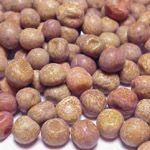

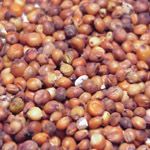
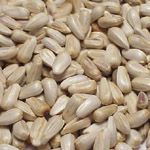
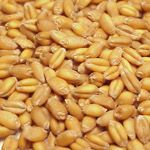
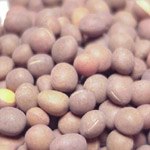
Maple Peas
Protein 25.3%
Fat 1.1%
Buckwheat
Protein 11.3%
Fat 2.2%
Protein 8.9%
Fat 3.0%
Protein 15.6%
Fat 31.6%
Protein 17.9%
Fat 1.6%
Protein 26.3%
Fat .9%
Additional
Supplements For Pigeons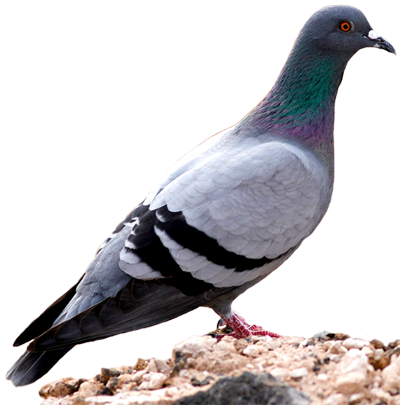
Domestic pigeons don’t have the opportunity to forage which allows them to feed selectively and to supplement their diet in the event that the nutritional balance of their diet is inadequate. Therefore, it is important that the owners provide a healthy and balanced diet to their birds. This raises another important question: do pigeons need additional supplements other than a good balanced diet and grit? The whole idea behind supplements to improve health in our birds is very attractive because we live in a culture expecting some magic pill that can cure almost anything and give us longevity. So where was the pigeon hobby, before companies provided long lists of supplements for pigeons? What was the life expectancy of domestic pigeons 100 years ago? People raised pigeons healthily for thousands of years without any supplements; in fact, you ask any old timer and they will tell you back in the day the pigeons were healthier eating shelled corn as their only diet. In the 1980’s vitamin A plus E was pushed by the medical community as a preventative of heart disease in humans. However, a massive clinical trial was published that showed this vitamin combination not only did absolutely nothing to prevent heart disease, but had no other health benefits present in the data. Worse still, the rate of some kinds of cancer was higher in the group taking vitamin A plus E. The only logical conclusion is that a reasonable diet supplies all the A and E a human needs for optimum health and supplements actually increase the risk of health damage. An excess consumption of vitamin A has long been known to cause vision problems. That being said, I don’t use any vitamin supplements for myself or for my birds. A healthy and balanced diet as well as clean water will keep your pigeons in good health. The only supplement I would have considered if I did not raised birds in sunny South Florida would have been vitamin D. Pigeons, just like humans, need vitamin D and they, also like humans, normally get that from the sunlight. Pigeons kept indoors will need a vitamin supplement because they are not exposed to direct sunlight and thus unable produce their own vitamin D.
I use bleach or
Clorox in my pigeon’s drinking water. Although bleach
is not a cure for everything, and should be used very carefully, it
can be very beneficial preventing certain diseases. If it is used too
much,
however, it can cause more harm than good. You can put your birds at
risk very quickly by the misuse of bleach. It is recommended to use
bleach to
clean drinkers and feeders only and not as a prevention medication
because of the risk of overdosing the birds. After you have cleaned
the loft items,
rinse them out with clean water thoroughly. Let them dry in the case
of a feeder and then fill them both up. The trace amount of bleach
residue
in the drinker should be just fine, but no more will be needed or required.
Always remember to never put anything else in the drinking water at
the same time as chlorine. Chlorine is a strong chemical which binds
to most
organic molecules and can change their chemical identity, making some
non-toxic compounds become toxic. Chlorine is a very strong disinfectant
and keeps
the water-transmission of disease organisms to a minimum. Most diseases
of pigeons can be spread via the drinking water, so the judicious use
of a disinfectant can prevent some of the things that our pigeons may
be exposed
to. A common misconception is that bleach will kill good and bad gut
bacteria and birds should be given probiotics after they have been
given bleach.
The fact is, bleach does not kill a single bacteria in the gut. After
all, the first place food or water goes is into the crop. Any bleach
that gets
into the crop is going to be consumed in about one microsecond due
to all the food in the crop and mucus on the crop lining. Bleach only
kills bacteria
or protozoans that get into the water when a bird drinks and has not
sterilized its beak before drinking. There may be a hidden
benefit as well: the increased consumption of chlorine, which in turn
is eliminated by the kidneys, produces more acid urine. The urine is
excreted
along with the feces. (it is the white cap on the feces) This net result
is a more acidic droppings. Salmonella, and other bacteria, dislike
an acidic environment.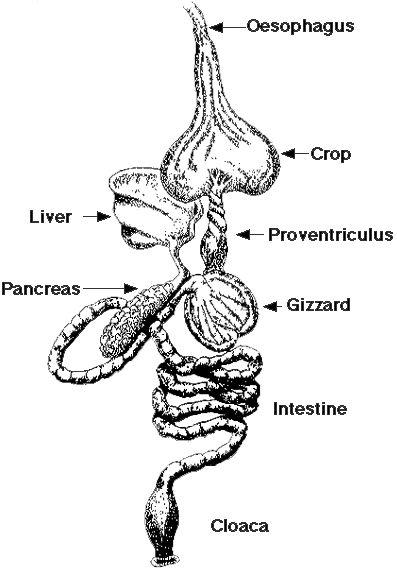
I used to use probiotic powder or capsules (added to drinking water) to help replace the good gut bacteria and keep my pigeons healthy. Supposedly, garlic was also a very important supplement that acts as an antibiotic, keeps the feathers looking nice and keeps internal parasites away. Some people even use apple cider vinegar added to their water (1 tbsp per gallon of fresh water) once a month to add some acidity to the system which keeps diseases like coccidiosis, canker and crop candida away. However, I haven’t found or seen any clinical studies that show that when probiotics are taken orally, it has any benefits to any animals. In fact, studies show that the only way to get back to a normal bacterial balance in the intestines is often to do fecal transplant from a balanced person into the colon.
The pigeon has a crop, where a pre-digestion process takes place. The large grains are ground up when enter the gizzard - their stomach. Depending on the type of food the pigeons eat this process can be long or short. Next, the pre-digested food goes to the small intestine. It is essential that the small intestinal bacteria keep working efficiently. Especially in the first part of the small intestine we find various types of lactic acid producing bacteria. We can help the digestion process in the small intestine in various ways. We work more and more with soft cheese curds, yogurt and buttermilk to promote the good bacteria. This is only somewhat effective, because the stomach acids and secretions in the small intestines such as bile salts and pancreatic enzymes throw a wrench into the works and many of these Lactobacilli die an early death.
According to Dr. Richard Cryberg, pigeons’ digestive tracts are pretty much equivalent to humans. Humans have an esophagus and pigeons have a crop. In both, the purpose is to get food to the first digestive stage. That first stage in pigeons is the proventriculus; in humans it is the stomach. In both cases hydrochloric acid is dumped into the food in large quantities as well as enzymes that break down proteins and starches that must have a pH of about 1 to work. In a pigeon, as they have no teeth to grind up food, the proventriculus and gizzard swap contents back and forth alternatively grinding and soaking in strong acid until the food is basically a liquid. In pigeons or humans this liquefied food is dumped from the proventiculus or stomach, respectively, into the small intestine. The instant it hits the small intestine the pH must be raised to about 7. This is accomplished by dumping a lot of sodium bicarbonate into the liquified food mix fast. This must happen very fast or the enzymes and acid from the stomach or proventiculus would rapidly eat holes through the small intestine leading shortly to death. In the small intestine different enzymes are added, as well as bile acids, to allow absorption of fats. Mainly the small intestine serves to absorb nutrients and minerals in the food. So, any bacteria eaten must first survive the proventiculus with its pH = 1. To put that pH in perspective that is something like 1000 times more acidic than you can ever get with vinegar in water. A substance with pH = 1 is acidic enough to eat a hole in your skin. Plus you have a bunch of digestive enzymes. Then in the small intestine you have a pH reasonable for life but more digestive enzymes. Few bacteria other than disease organisms are evolved to survive such extremes.
Water
 Pigeons drink freely several times a day but mostly right
after they eat. Pigeons have to drink water after they eat to soften the
food for digestion and to regulate body temperature. Fresh and clean water
should be provided to pigeons at all times. Pigeons, unlike many other
birds, suck up the water instead of dip, tip, and gulp. Observing pigeons
drinking can help a breeder to figure out the sex of the pigeons. Many
people believe that hens do not wet their nose when they drink where cocks
dip their nose into the water while they are drinking. Water becomes more
important to pigeons when they are feeding the young. Until the young are
weaned, all their water comes from parents that feed them. If babies don't
get enough water to soften their food, they would soon die. In high
temperatures, pigeons drink more than during cold temperatures as do we.
Pigeons will drink much more water when pellet fed than they will drink when
grain fed. Water should be changed every day or every other day. Water
should be supplied in a way that the birds can not foul it with their own
droppings. Dirty water causes disease and help spread the disease to rest of
the coop. Dampness also create an environment for disease to develop and
spread. It's a good idea to move the water container to other places to allow each
location to dry.
Pigeons require much more water than most birds, especially during breeding season,
so dehydrating foods should be avoided. Salt can dehydrate pigeons, but pigeons
love salt, and will attack salt blocks reserved for pigs and sheep.
Pigeons drink freely several times a day but mostly right
after they eat. Pigeons have to drink water after they eat to soften the
food for digestion and to regulate body temperature. Fresh and clean water
should be provided to pigeons at all times. Pigeons, unlike many other
birds, suck up the water instead of dip, tip, and gulp. Observing pigeons
drinking can help a breeder to figure out the sex of the pigeons. Many
people believe that hens do not wet their nose when they drink where cocks
dip their nose into the water while they are drinking. Water becomes more
important to pigeons when they are feeding the young. Until the young are
weaned, all their water comes from parents that feed them. If babies don't
get enough water to soften their food, they would soon die. In high
temperatures, pigeons drink more than during cold temperatures as do we.
Pigeons will drink much more water when pellet fed than they will drink when
grain fed. Water should be changed every day or every other day. Water
should be supplied in a way that the birds can not foul it with their own
droppings. Dirty water causes disease and help spread the disease to rest of
the coop. Dampness also create an environment for disease to develop and
spread. It's a good idea to move the water container to other places to allow each
location to dry.
Pigeons require much more water than most birds, especially during breeding season,
so dehydrating foods should be avoided. Salt can dehydrate pigeons, but pigeons
love salt, and will attack salt blocks reserved for pigs and sheep.
Grit
Pigeons have different digestive system than mammals. Pigeons don't have teeth that allows for maximum ingestion of food in a short time. So, pigeons eat sand, stones, oyster shell, salt or grit to break down and process the food they eat. Grit is a mixture of oyster shell, minerals, salts, stones and charcoal which they used to process their food. The hens that are getting ready to lay eggs especially need grit to increase calcium level in their body to create stronger egg shell. I give my pigeons red grit which they love to eat as a dessert after I feed them. Red cross grit is most often found at a feed supply store, it contains crushed oyster shells and is a good source of calcium. You can introduce pigeon grit to young birds, when the bird is older and eating grain on its own. You can also add some sea salt to your grit, if you see your birds make a mess by spreading grit all over the floor.
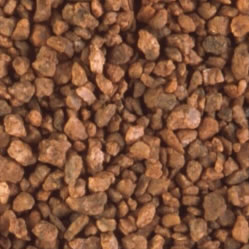 When pigeons eat seeds, we can see them being held in the crop, which
is not the stomach or gizzard. It is simply a holding area
for seeds to wait
until the gizzard is ready to take on more food. The high metabolism of
the bird requires that food constantly be available and far
more than just the
gizzard can hold. So the crop is just a way to gather and hold more food
than is needed at the time. No digestion is taking place until the seeds
are passed to the gizzard. On the way to the gizzard, acid is secreted
to aid in digestion and then in the gizzard there are keratin
plates that grind
the seeds. This is where grit would be held and in some birds it is believed
that the additions of hard stones aid the gizzard and its keratin plates
in grinding food. However, studies shown that the keratin plates themselves
are sufficient to mechanically grind or further manipulate the acid/food
combination for digestion/absorption through the remainder of the digestive
tract.
When pigeons eat seeds, we can see them being held in the crop, which
is not the stomach or gizzard. It is simply a holding area
for seeds to wait
until the gizzard is ready to take on more food. The high metabolism of
the bird requires that food constantly be available and far
more than just the
gizzard can hold. So the crop is just a way to gather and hold more food
than is needed at the time. No digestion is taking place until the seeds
are passed to the gizzard. On the way to the gizzard, acid is secreted
to aid in digestion and then in the gizzard there are keratin
plates that grind
the seeds. This is where grit would be held and in some birds it is believed
that the additions of hard stones aid the gizzard and its keratin plates
in grinding food. However, studies shown that the keratin plates themselves
are sufficient to mechanically grind or further manipulate the acid/food
combination for digestion/absorption through the remainder of the digestive
tract.
So, is grit necessary and why do birds eat it? Does the grit have any mechanical benefits of grinding the food? It probably does add something to the process of grinding, but we know that in processing the food for absorption, the gizzard could accomplish this task without grit. This does not mean that the mechanical process is the only reason to ingest these grit items. As they are manipulated in the gizzard, the grit is worn down and then passed through the digestive tract. Various minerals that are included in the grit are then made available to the lower digestive tract for absorption. So, grit really acts as a nutritional supplement and not as a digestive aid. Arguing over the use of grit is like arguing about whether or not one should use vitamins in water or not. Some people do, some don't, but the issue is not that cut and dry. An overall look at the bird’s diet and intake along with other husbandry routines are in order to come up with a complete picture and a decision of whether the procedure is "right" and beneficial for your birds.
Housing For Pigeons
Houses for pigeons are generally called lofts. Pigeon houses are also sometimes referred to as "coops" although the word seems to have originally applied to the breeding pens inside the housing. The most important aspect of the pigeon housing is the security where cats, dogs, and aerial or nocturnal predators must be excluded. Another important requirement as to pigeon housing is that the interior always be kept dry because dampness brings disease. When designing a loft, we should make sure the loft has a good air flow to keep the pigeons and the breeder healthy and feather dust free. Although air flow of the loft is very important, in colder climates lofts are furnished with doors and windows, providing suitable protection from storms, heavy snows, cold and rain. Pigeon housing should be spacious enough so that they can flap their wings without hitting their side. The house you build or purchase for your pigeon should fulfill a number of pigeon requirements.
Many pigeon fanciers build their pigeon loft with at least two pens. This allows them to separate their males from females in order to control mating until the breeding season. Extra pens allow for the keeping of spare, unmated females and males which can be useful to replace existing pigeons which might perish from disease or predation. Performing pigeon breeders also have fly pen where they keep their performing birds. Because it can be difficult to determine the sex of a young pigeon it is also handy to have extra pens for pigeons that have been weaned but which have not given external indications of their sex yet.
Pigeons can live in cold temperatures if they are fed extra corn or other fat. It is very important however to keep the loft dry to keep coccidiossis, an intestinal bacterial infection, and other diseases away. The droppings should be cleaned once a day to keep the cage clean and the pigeons healthy. Pigeons should have a cup-shaped area to nest in to keep the eggs from rolling out under the parents and getting cold. Lastly, be careful not to over crowd your loft more than it can handle.
Importance of direct sunlight and Ultraviolet light
Birds, just like we do, need direct sun light for certain metabolic processes to occur. The ultraviolet lights, which are filtered by glass, are a critical component of the physical and mental well being of pigeons. So, locking pigeons up in rooms where there is no direct sun light will affect bird’s mental and physical health. Even if the pet birds are in front of glass window, the beneficial components of the UV light are filtered out. The condition known as UV deficiency in birds is like the vitamin D deficiency in humans. UV prevents disease and keeps them optimally healthy. Furthermore, the pigeons have a preen (oil) gland above the base of their tail. This gland secretes oil when the pigeon grooms itself, thus spreading this oil over its feathers. This oil contains a compound that produces vitamin D when exposed to the sun’s ultraviolet rays. So, as the pigeons groom under an ultraviolet light source, it’s actually mixing up a healthy batch of vitamin D on its feathers. When sunlight comes in direct contact with the body, it is synthesized into vitamin D, which maintains proper levels of calcium and phosphorus in the blood stream. Without vitamin D, the body does not properly absorb calcium - something that is critical to our avian friends.
A vitamin D3 deficiency frequently results in hypocalcaemia or low calcium levels. Symptoms can include: Low egg production/hatching and poor shell quality, bone fractures, and seizures. Shortage of vitamin D3 can also cause physical abnormalities, including a soft or overgrown beak, splayed legs, and bent keels. Exposure to ultraviolet light positively affects not only the physical health of the birds, but also their mental processes and emotional well-being. Without access to direct sunlight or an alternative appropriate source of UV light conditions can include: Destructive behavior like feather picking, a poor feather coat, organ dysfunction, immunologic disorders, poor mood, and temperament.
If you are not living in warm, sunny climates, and can’t have your birds outside for several hours a day, it is recommended to provide your birds with indoor UV lighting to ensure they get the exposure they need for good health. There are a number of UV bulbs for birds available on the market but you will want to buy the kind that provides both UVA and UVB rays. Make sure you’re buying UV bulbs designed for birds because the UV spectrum in aquarium bulbs are in the blue range spectrum light rays, which produce more female than male offspring. Most people keep UV lights on their birds for around eight hours a day, but the minimum recommended amount is four hours. Also, if you are able to give your birds direct sunlight, DO NOT leave your birds to suffer (or worse) from too much exposure. Everyone has their own opinion on how much direct exposure is enough for birds, but it is generally understood that a bird needs at least some access to direct sunlight to remain healthy. Please use common sense when you provide direct sun light to your birds.
Common Pigeon Diseases
Every breeder should keep certain medicine handy for their loft in case of emergency. Pigeon health is so temperamental and they can go downhill in a hurry. Many fanciers and breeders don't keep proper medication in their lofts and by the time they get the medicine the bird is either dead or too far gone. Therefore it is very important to keep medication in your loft at all times in case of an emergency. In addition, the following preventive measures should help: practice a high standard of sanitation at all times; do not add birds to an established flock since they may be carriers (if birds are added, quarantine for 30 days); and provide a source of clean, fresh water eliminating all sources of stagnant water. The following is not an inclusive list of all pigeon diseases, but probably the most common ones out there. Some of the symptoms are same as others must be medicated and controlled really fast before it spreads to whole coop.
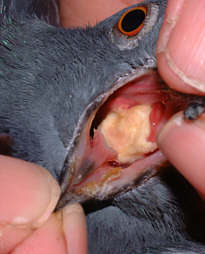 Canker (Trichomoniasis)
is the most common sickness and requires medication right away. Approximately
80 percent of the
pigeons are infected with this organism and it can quickly become deadly
especially for the youngsters. Adult pigeons frequently carry the canker
without showing signs of disease. When the adult pigeon is stressed,
however, the organisms may multiply profusely. Typical signs are very
suggestive of the disease. Demonstration of large numbers of organisms
(small plaques in the mucosa) in the oral fluids is usually considered
enough evidence for diagnosis. The picture on the right is an example of
cancer in pigeon's throut. Lesions of canker are usually most extensive in
the mouth, pharynx, or esophagus but may occur at other sites including the
crop, proventriculus, or sinuses. Affected pigeons in a loft may cease to
feed, become listless and ruffled in appearance,
and
lose
weight
before
death.
Pigeons often have difficulty when closing their mouths because of lesions
in the oral cavity. They drool and make repeated swallowing movements.
Watery eyes may be apparent in birds with lesions located in the sinuses
or tissues around the eyes. Diarrhea, increased water intake, and respiratory
distress may be noted. Birds may die suddenly due to suffocation if the
lesion blocks the opening of the trachea. Pigeons that are carriers canker
often transmit it to their young during feeding. If squabs are infected
with
large numbers, a severe outbreak may occur and endanger the entire young
generation. As soon as you
notice the cancer in the bird’s throat, try removing it with tweezers
or q-tip and treat the bird for cancer right away for the recommended dosage.
I highly recommend medicating all the birds that share the water and feed
with that sick bird as well. The Canker can
contaminate the egg prior to laying and is one of the two principal infectious
causes
of dead-in-shell youngsters
and nestling death. The other cause is for young to die-in-shell is Paratyphoid
(Salmonella).
Canker (Trichomoniasis)
is the most common sickness and requires medication right away. Approximately
80 percent of the
pigeons are infected with this organism and it can quickly become deadly
especially for the youngsters. Adult pigeons frequently carry the canker
without showing signs of disease. When the adult pigeon is stressed,
however, the organisms may multiply profusely. Typical signs are very
suggestive of the disease. Demonstration of large numbers of organisms
(small plaques in the mucosa) in the oral fluids is usually considered
enough evidence for diagnosis. The picture on the right is an example of
cancer in pigeon's throut. Lesions of canker are usually most extensive in
the mouth, pharynx, or esophagus but may occur at other sites including the
crop, proventriculus, or sinuses. Affected pigeons in a loft may cease to
feed, become listless and ruffled in appearance,
and
lose
weight
before
death.
Pigeons often have difficulty when closing their mouths because of lesions
in the oral cavity. They drool and make repeated swallowing movements.
Watery eyes may be apparent in birds with lesions located in the sinuses
or tissues around the eyes. Diarrhea, increased water intake, and respiratory
distress may be noted. Birds may die suddenly due to suffocation if the
lesion blocks the opening of the trachea. Pigeons that are carriers canker
often transmit it to their young during feeding. If squabs are infected
with
large numbers, a severe outbreak may occur and endanger the entire young
generation. As soon as you
notice the cancer in the bird’s throat, try removing it with tweezers
or q-tip and treat the bird for cancer right away for the recommended dosage.
I highly recommend medicating all the birds that share the water and feed
with that sick bird as well. The Canker can
contaminate the egg prior to laying and is one of the two principal infectious
causes
of dead-in-shell youngsters
and nestling death. The other cause is for young to die-in-shell is Paratyphoid
(Salmonella).
Paratyphoid is the name given to the disease caused when pigeons are infected with the bacterium Salmonella. Youngsters less than 6 weeks of age develop severe gastroenteritis (a condition that causes irritation and inflammation of the stomach and intestines), fails to digest its food, causing weight loss, loss of appetite, diarrhea and sometimes quite a high mortality rate. The eyes of the squabs become glassy; and as the disease progresses, there is usually extreme emaciation and greenish diarrhea. Joint swelling may or may not occur on squabs. In older pigeons, the bacterium can infect the joints, leading to red hot swollen joints in the wings or legs, or alternatively inflame the membranes round the brain leading to loss of balance and head tilt. The bacteria can also cause sterility in both sexes and can contaminate the egg prior to laying and is one of the two principal infectious causes of dead-in-shell youngsters and nestling death. Many birds exposed to the bacteria show only mild or no signs and develop into asymptomatic carriers, periodically shedding the bacteria when stressed. The bacteria can also survive and multiply in the environment. The disease is difficult to control because of the difficulty of detecting carrier birds and the difficulty in completely eradicating the bacteria from a contaminated environment. To prevent Paratyphoid, maintaining loft hygiene is critical, since salmonella flagellates can live in the droppings of pigeons for some time. Regular cleaning and disinfecting of lofts, feeders, and drinkers are imperative. Minimizing contact with rodents, roaches, and wild birds is as important as quarantining newly acquired birds. The pigeons that are infected with this disease must be treated with an appropriate antibiotic in the drinking water for l0 days and must be seperated from the rest.
Coccidiosis is an intestinal disease which is widely distributed among all pigeons. Coccidia is a small protozoan that lives in the wall of the bowel. Its eggs are passed in the droppings and become infective quicker in humid conditions. In almost any pigeon loft we can find coccidiosis, but only a very serious infection will cause visible clinical signs. The pigeon is able to build up some resistance against this parasite and therefore a treatment will only be necessary in case of a very serious infection. A good daily hygiene has to go always hand in hand with a good treatment and a dry climate on the loft. This disease is transmitted by dirty contaminated baskets, drinking of contaminated water on roofs or out of gutters, eating or drinking of contaminated food or drinking water. The clinical symptoms of the disease are disturbed digestion, flat and watery droppings, weakness causing other secondary infections, delayed growth of young pigeons. Other signs of an outbreak include birds that are pale, droopy, tend to huddle, consume less feed and water, have diarrhea, and may become emaciated and dehydrated. Coccidiosis usually occurs in growing birds and young adults. It is seldom seen in birds under three weeks or in mature birds.
E. coli or Collibacillosis is caused by gram negative bacteria's which can invade our lofts through infected dust particles, rodent droppings, and trough infected pigeon droppings coming into contact with eggs in the nest. Infected adult pigeons will emit the bacteria throughout a pigeon loft. E. coli bacteria can manifest themselves in any part of the pigeon's body, symptoms can be diverse. Most often young will die in the nest, adult birds will become listless and lose weight, and their droppings will become loose, mucous, and greenish-yellow in appearance. Sometimes the droppings will have a foul odor. Occasionally some birds may have nasal discharges and respiratory problems associated with this disease. Maintaining good loft hygiene and keeping rodents away from feed and water are very important. Also keeping dust and ammonia levels down will help to control any outbreaks. Any fancier would be well advised to have a good general antibiotic in his medicine chest. They can be useful as "first choice" drugs if and when problems occur. General antibiotics are effective against a broad range of both gram positive and negative bacteria. But excessive use of them can really damage the microflora of the bird, therefore most veterinarian suggest a use of Improver as it is called 'green antibiotic' and will have the same effect that any anitbiotic, but will leave the good bacterias and keep the balance of the pigeon intact.
PMV 1 (Paramyxovirus 1) is a very deadly disease to pigeons and doves only. The virus produces two sets of symptoms. One, it causes inflammation of the kidneys so infected pigeons will produce a ton of urine. Instead of the white portion of the dropping you will get a pool of water around the fecal portion on the perch. The birds will drink a lot to keep up with urine production and the loft will get very wet. Two, it causes neurological signs such as lameness, dropped wings, twisted necks, inability to fly, ect. We don’t seem to see as high a percentage of birds with the neurological signs today as we used to. There are vaccines that are readily available to use for it, but you must vaccinate before the birds are exposed to the virus. PMV-1 is transmitted by direct contact. This may occur in crowded lofts, shipping containers or even by social contact such as territorial aggression between cocks. More importantly, transmission can occur between show cages. Indirect transmission may also take place from contaminated food and water sources. Fecal dust can become airborne and further transmit the disease between lofts and pens. Vectors such as rodents and humans can transport infected dust on fur and clothing, respectively. Last, insect vectors; pigeon flies and mosquitoes, may infect birds with PMV-1 and thus should be controlled in the loft. Paramyxovirus can be a devastating disease in an unprotected, large flock. Protect your birds through understanding, good management and vaccination.
Adeno Virus is seen only birds whose immune systems are suppressed are vulnerable to this disease. There are two types of Adeno Virus that infect pigeons. Type 1 affects young pigeons primarily and causes vomiting and diarrhea, from which many birds recover. Type 2 is contracted by older pigeons and strikes the liver, with most affected birds dying within 24 hours. Some birds display a fluid yellow diarrhea and vomiting before death. But the main sign is sudden death, occurring within 24 hours of the onset. None of the affected birds live longer than 48 hours. E. coli often accompanies Type 1 ( which is associated with young pigeons ) and complicates the infection, making the diarrhea and vomiting more severe and adding respiratory symptoms. This Type 1 Adeno Virus/E. coli sometimes successfully treated with antibiotics. Cases that are the best managed are those in which the loft environment is good and in which all secondary diseases like canker and coccidiosis are treated so that birds are best able to fight the virus. Adeno virus is always present in a young bird, and it erupts when the immune system fails. It is important to wait until the 12-th week for any type of vaccination. There is currently no vaccine that is proven to be effective against Adeno Virus. It's also important to keep stress in the loft at a minimum with AntiFungal and Improver and to boost pigeons' general health with vitamin supplements that are already included in Pigeon Vitality products, etc.
Circo Virus damages the immune system and seems to invite secondary infection, Circo Virus is sometimes called pigeon AIDS. Circo Virus damages the lymphocytes in the blood, which are closely associated with the immune system. With damaged lymphocytes, the pigeons become susceptible to secondary infections with other viruses, parasites and bacteria. Pigeons infected with Circo Virus can also have continuing problems with diseases like respiratory infections, chlamydia, or canker due to the fact that they cannot form natural immunities to them. Most often, Circo Virus kills very young pigeons and strikes older youngsters that have already molted three or four flights. Birds with Circo Virus have a yellowish discharge dried on the beak, and they are very reluctant to move, thin and dehydrated, and have no appetite and difficulty breathing. But it is extremely hard to diagnose Circo Virus by looking at the birds. The signs that can be observed are typically caused by many different types of secondary infections. Use of improver and AntiFungal while keeping the disease out of the loft by not introducing birds from lofts known to have health problems. Stray youngsters should be immediately removed if they do not look well, and try to identify carrier stock birds by re-pairing those whose offspring seem weak or die. If the virus comes into four loft, minimize its spread by taking sick birds out immediately and isolating them while giving them full doses of Improver, paying attention to on-going hygiene. Good care, given day to day, places your pigeons in the best situation to resist infection, and gives those that become infected the best chances of recovery. The main defense against. Circo Virus is to identify and treat secondary infections, allowing the birds to live long enough for immune system to repair itself. Probiotics help well birds resist the disease by maintaining a healthy bowel population of bacteria.
Pigeon Pox is caused by a virus that is generally carried by mosquitoes and other biting insects. When a nonresistant pigeon is bitten by a carrier parasite, the virus enters the bloodstream of the bird, and within five to seven days, small whitish wart-like lesions appear on the head, feet legs and beak areas. When exposed the birds will develop a fever and feel a little off before they break out with lesions. These deposits can grow to become large yellowish bumps. In time, these lesions will dry and fall off, so it is our advice to leave them alone. Although pigeons of all ages are equally susceptible to it, pox normally occurs on squabs. Other than using the pigeon pox vaccines, no remedy is acceptable. Improver and AntiFungal can only reduce the virus to his minimum and cure up to 75% of the time. Controlling the mosquito and fly populations in and around one's loft may be helpful, but the only sure way to prevent pox is to vaccinate.
One-Eye Colds is often confused with the onset of mycoplasmosis, one - eye colds are usually associated with a peck in the eye or some other type of physical injury affecting the eye. One-eye colds can also be caused by improper ventilation, drafts or dampness in the loft. The symptoms include a watery or mucous discharge in only one eye is usually the symptom most commonly noticed, but occasionally both eyes will have watery appearances. Sometimes one eye can become completely shut, depending upon the degree of infection. To prevent it, pigeon breeder must maintain proper ventilation and not allow overcrowded conditions to manifest themselves in the lofts will go a long way in preventing one-eye colds. It is also considered good loft hygiene to keep dust levels to a minimum, as many types of infectious bacteria are carried by dust particles.
Parasites like lice and mites can infest the pigeons. Lice feed off feather debris and skin flakes, etc. They have little production significance except for the nuisance and subsequent restlessness they cause the birds. Mites, however, are a serious parasite as they feed off blood. Some species are found predominantly on the birds, while many are mainly found in cracks and crevices of the loft, moving on to the birds, particularly brooding parents and nestlings, during the night and feeding. Affected squabs become visibly pale because of the resultant anemia, grow poorly, wean late and occasionally die. There are many good and safe insecticides available to use on them. You can buy them at any pigeon supply company or even at most garden shops. 5% Seven dust is very useful. Just make sure to follow directions and do not dust your birds where you feed them. Do not spray your birds with house product insecticide which will kill your birds.
Worms are internal parasites, which weaken the birds, leading to a delay in laying, reduced growth rate, and delayed weaning and poor food conversion. They also create a vulnerability to other secondary infections. Roundworms and hairworms are frequently involved in the worm infestation of the pigeons. Other types of worms play a lesser role. Roundworms and hairworms live as parasites in the intestine of the pigeons. They damage a pigeons body by extracting important nutritive substances from the digested food (roundworms), by the toxic effect of their excretion products and by destruction of the intestinal wall (hairworms). Young pigeons show increased susceptibility, whereas adult pigeons seem to develop some kind of immunity to these parasites. Although they may harbor isolated worms, symptoms of the disease are rarely observed. These pigeons are permanent carriers and are a constant source of infection for the rest of the loft, particularly the young pigeons.
Copyright 2013 by Arif Mümtaz. All rights reserved.